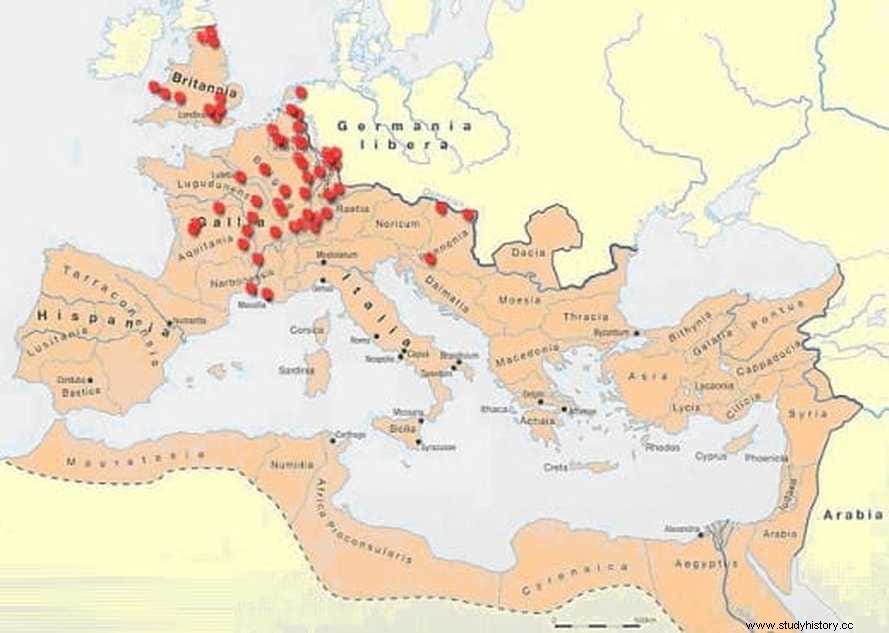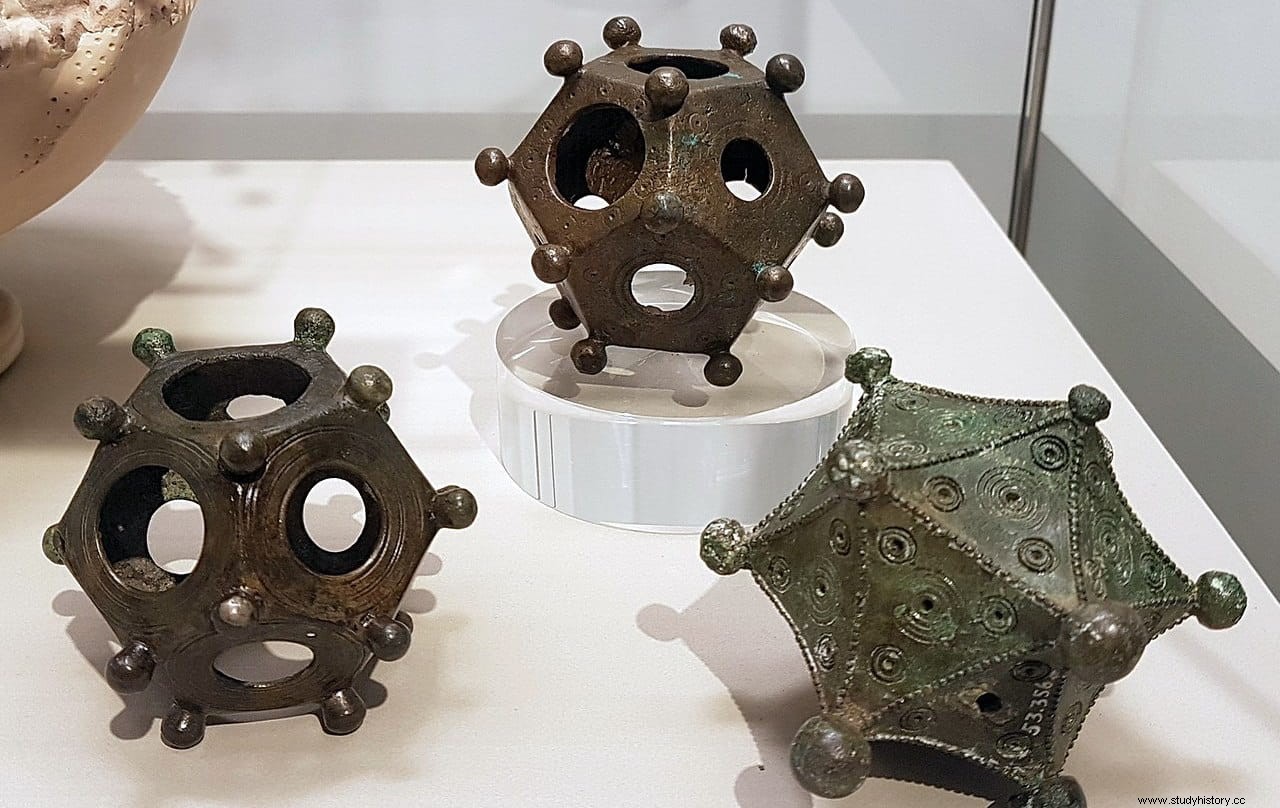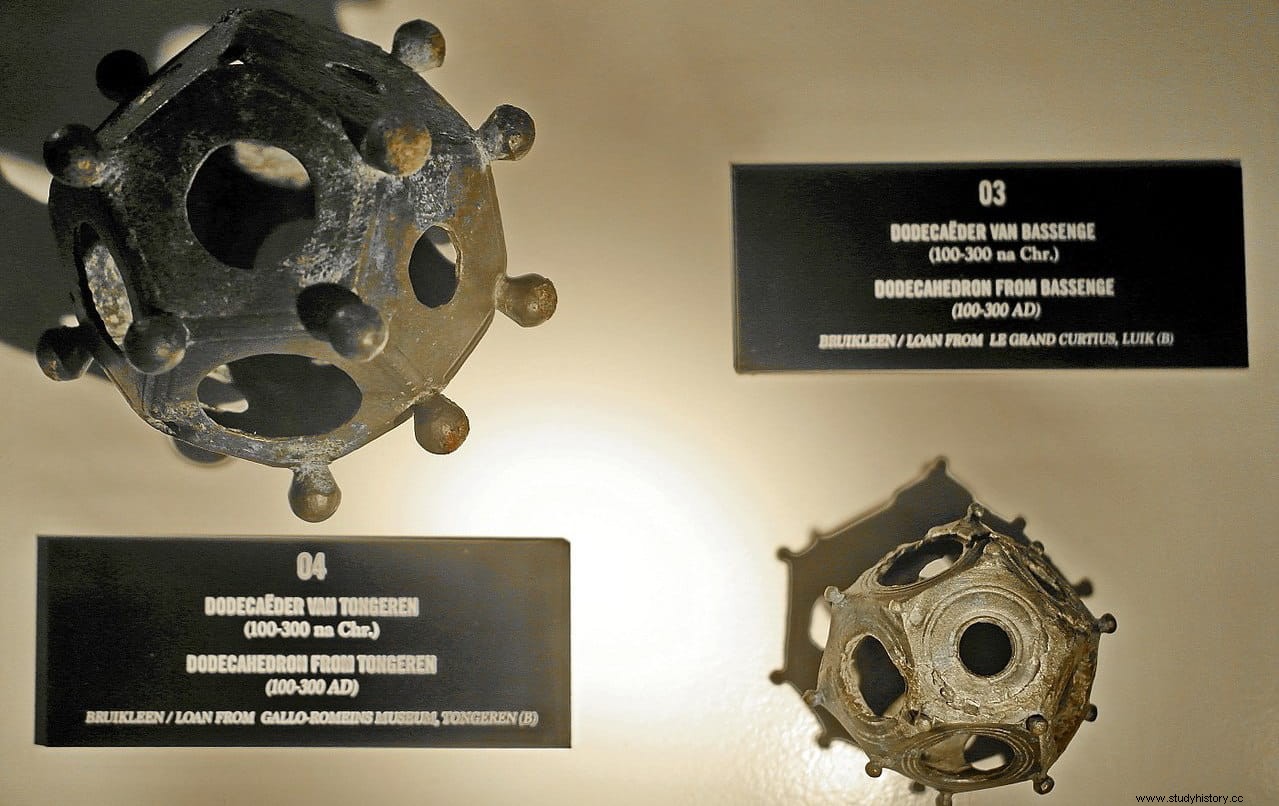More than a hundred dodecahedrons They have been found throughout the territory of the ancient Roman Empire, in Spain, Italy, France, even in peripheral areas such as Germany, Wales, and Hungary. According to archaeological records they date from the 2nd and 3rd centuries AD , but its usefulness is still unknown by researchers.
These are small hollow objects of bronze or stone dodecahedron-shaped, twelve pentagonal faces each of which has a circular hole in the center , of different diameters. The first was found in 1739, and since then they have continued to appear until more than a hundred.
Most were found in France and Germany and are between 4 and 11 centimeters in diameter. However, no mention of these objects has been found in contemporary sources, nor any representation in mosaics, reliefs or other artistic expressions.

Some researchers think they may be candle holders, as traces of wax were found on a couple of them. But the theories also point to other possible uses , like for example that they were a kind of dice for the game.
Or even measuring instruments to calculate distances (diopter), determine the appropriate date for sowing grain in winter, calibrate water pipes, or religious objects or used in divination rituals. It has also been considered as a children's toy.

Others, given that they were found mainly in peripheral areas of the empire, where the presence of the legions constituted the main group of Roman citizens, believe that they may be military badges .
Their use as measuring devices seems strange, because dodecahedrons are not all the same, they come in various sizes, and their faces are always different.
Plutarch, the famous Greek historian, wrote in the first century AD. that they were representations of the zodiac, where each of the twelve faces corresponded to an animal of the astrological circle. But even this theory has been dismissed by scholars as it does not explain the peculiar decoration of the dodecahedrons.

Many of them appeared along with treasures of coins , probably buried by their owners in the face of possible danger, which would indicate that they were considered valuable objects.
Smaller dodecahedrons have appeared in some areas of Southeast Asia from the same period, although these do seem to have a clear decorative purpose, given their small size.
The only thing researchers agree on is its name:Roman dodecahedron . Everything else, in the absence of confirmation by reliable archaeological or written sources, remains pure speculation.
